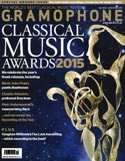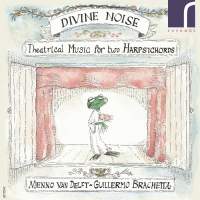Texte paru dans: / Appeared in: |
|
|
Outil de traduction (Très approximatif) |
|
|
Reviewer: Julie Anne Sadie
Guillermo Brachetta has set us an aural puzzle: what should we make of it? The theatrical music alluded to in the title refers to his unique arrangement of music from Platée, Rameau’s 1745 comédie lyrique, for two double-manual harpsichords. Menno van Delft, his former teacher at the Conservatory of Amsterdam, takes the second part in this masterly interpretation that conveys more the spirit than the letter of the work. Familiarity with the opera itself – full of humour and trenchant mockery – enhances the pleasure of listening to an arrangement that seeks to capture something of the grotesque, deluded frog Platea (sung by a countertenor), her encounters with Jupiter and Juno and the endless ridicule by other animals and birds. Toward that end, the two instruments by Titus Crijnen used in this recording offer a wide palette of instrumental colour and dynamics. If anything were wanting, it might be some representation of Platea’s pathos.
By way of setting his version in context, Brachetta chooses a suite from Gaspard Le Roux’s 1705 collection of pièces de clavecin, which the composer suggested could be performed in one of three ways: as solo works, with an additional melody instrument as a trio or with a second harpsichord. Guided by Le Roux, Brachetta made his own arrangement. He and van Delft play as though on one supercharged harpsichord, their ensemble immaculate, the clarity and resonance of their instruments beautifully captured.
Neither the Le Roux nor Couperin’s La paix du Parnasse can be described as ‘theatrical music’, though the latter forms the climax of a programmatic Apothéose de Lully (1725): the movements have titles and chronicle the meeting of Lully and Corelli on Mount Parnassus, concluding with a ‘sonade en trio’ which they play together with their French and Italian muses. Couperin is known to have performed his own music – and presumably that of others – on two harpsichords privately at home. So it’s hardly surprising that this excerpt
(presumably originally intended for two violins and bass) works so well, and for many will indeed be ‘divine noise’.
|
|
|
|
|
|
Cliquez l'un ou l'autre
bouton pour découvrir bien d'autres critiques de CD |
|




